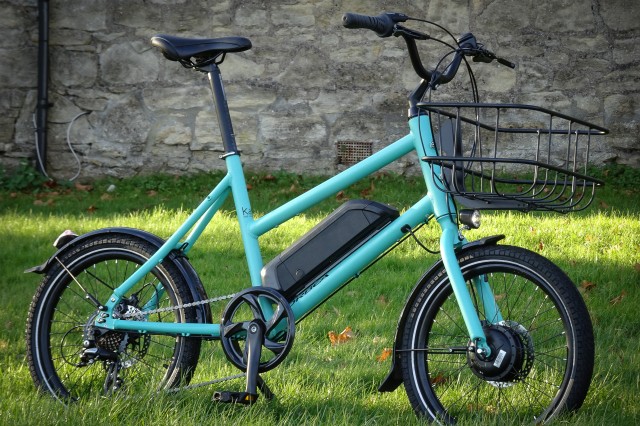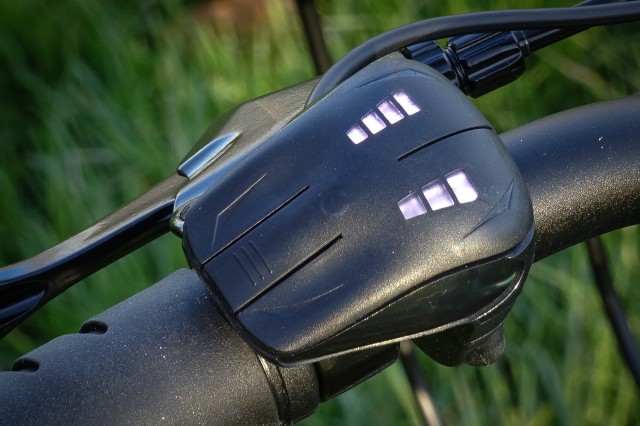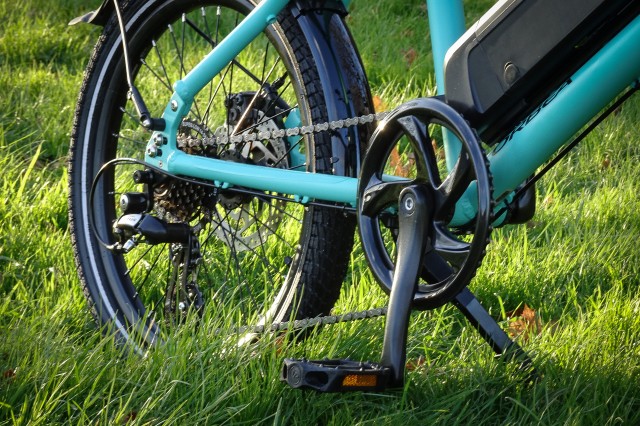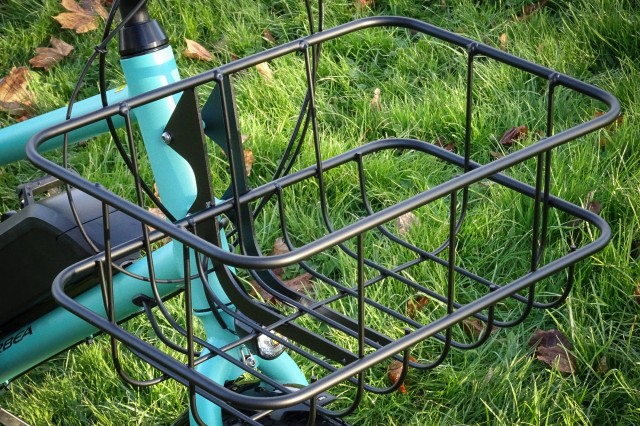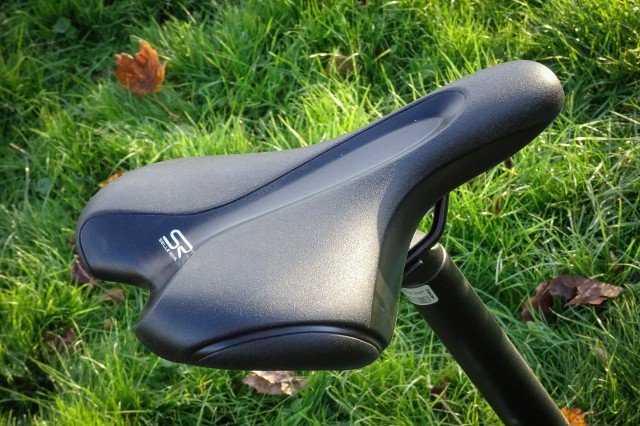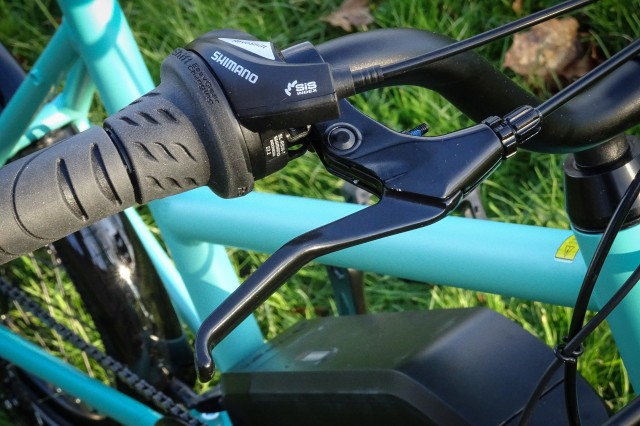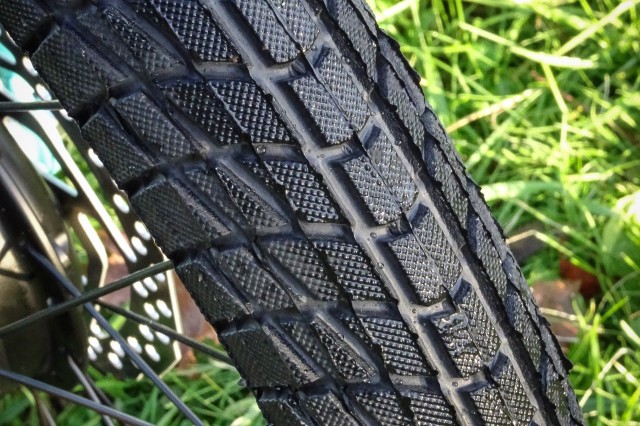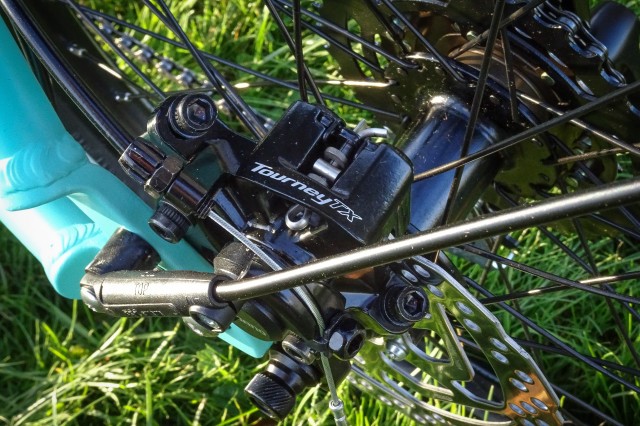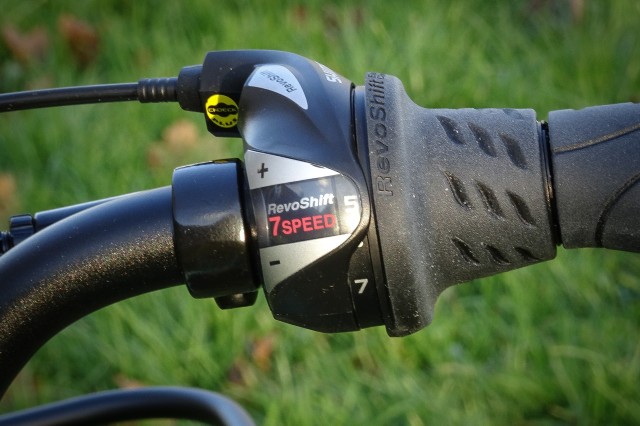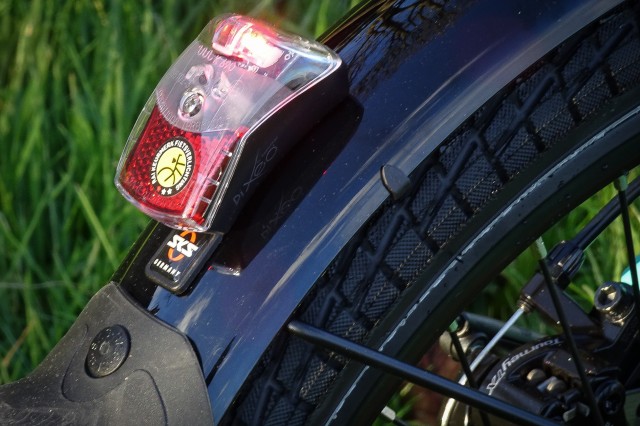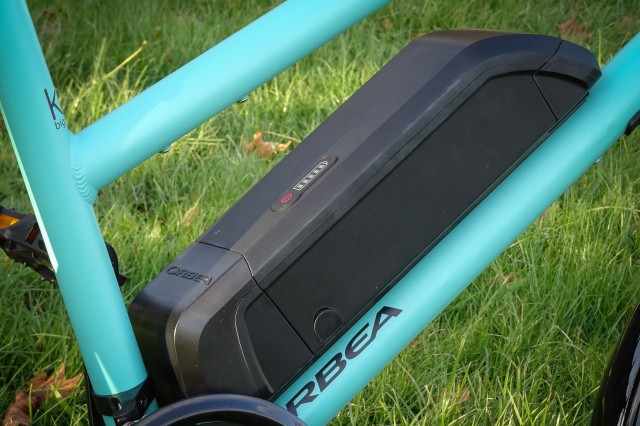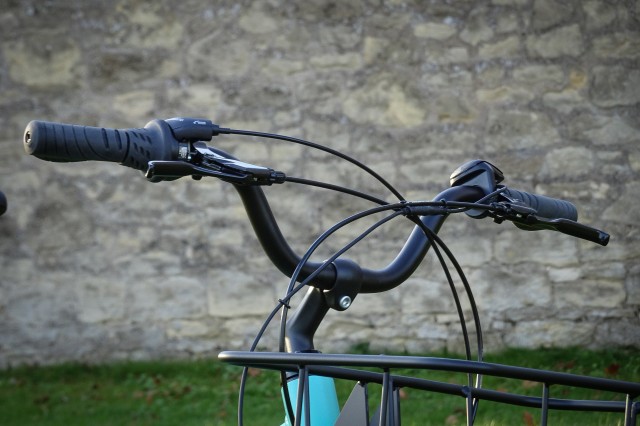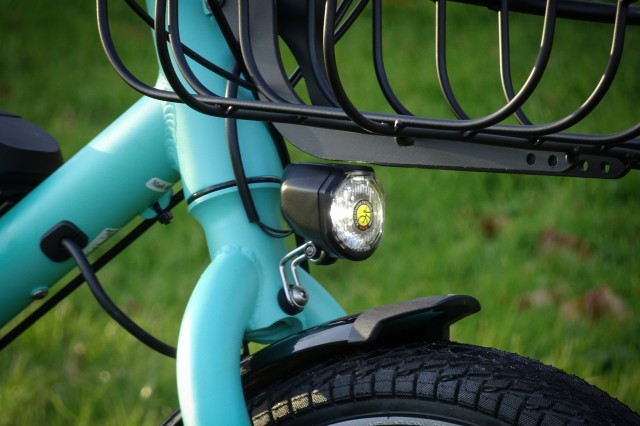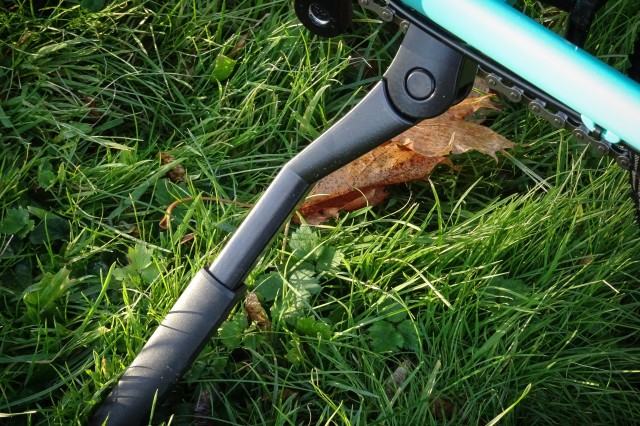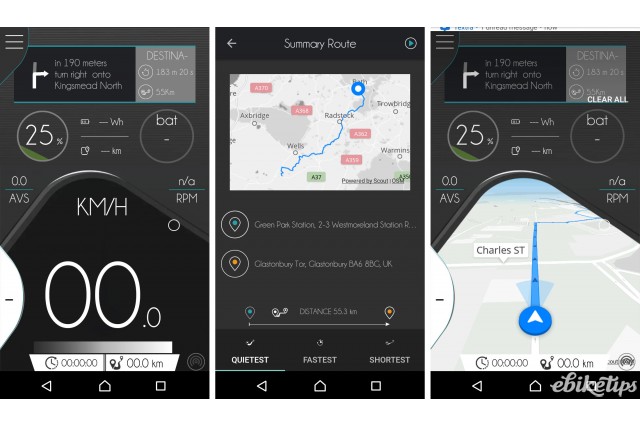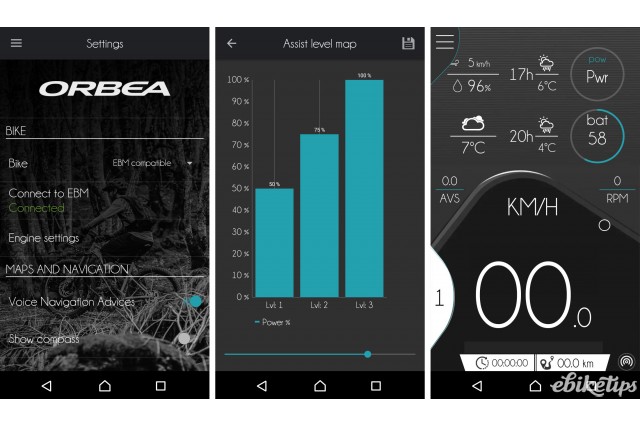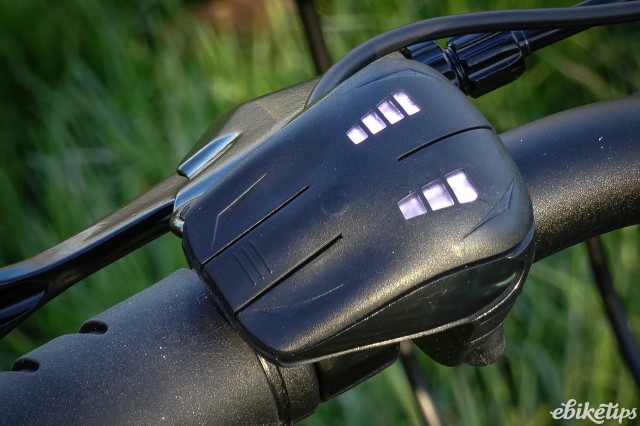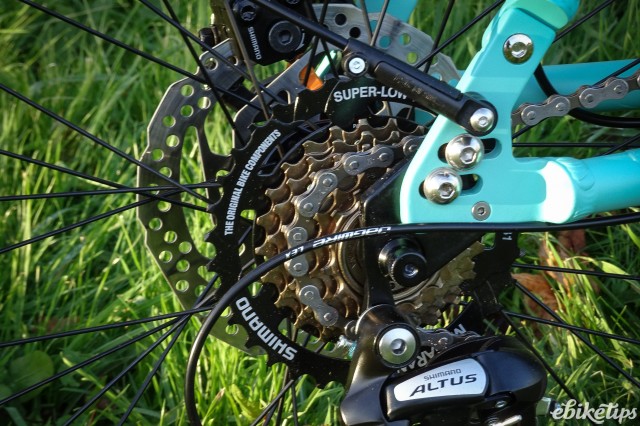Orbea Katu e50
Overview
- Enjoyable ride
- Smooth motor assistance
- App adds to the experience
- Motor choppy in high mode in standard configuration
- Motor not the most powerful
You may remember that we tested the Orbea Katu e30 back in 2016. And it did very well: we called it “A Good quality, small format city bike with a good ride and useful luggage options”. That bike was equipped with a Nexus 3-speed hub and a Bosch motor system, and the equivalent bike in this year’s line-up comes in at £1,799.
If you haven’t got that kind of budget Orbea have got you covered too: this is the new Katu e50, which retails for £1,299, and it puts in a good performance, although it’s not quite as polished as its more expensive sibling. That’s perhaps not a surprise, but it’s good enough to recommend as a city workhorse.
The Katu e50 is £500 saving over the e30, so what’s been tweaked to make it cheaper? Well, the most obvious difference is the motor system. Instead of a Bosch mid motor you get a front hub motor system that Orbea have developed with fellow Spaniards ebikemotion Technologies, the same people they teamed up with on the Gain road bike. The motor itself is a Bafang unit, but the control systems are different. The bike uses a down-tube-mounted 417Wh battery.
There’s a bar-mounted control unit which gives you your battery state and your assist level; there are three settings. The bike uses a cadence-sensing bottom bracket to manage the power, and the power curve of the motor depends on what mode you’re in and what speed you’re travelling. It’s not quite as clever as a torque-sensing setup, but it isn’t as basic as just stepping down the motor power either. Sort of a halfway house.
The Katu is designed as a useful city bike with a small footprint, and it uses 20” wheels making it quite a bit shorter than a standard city bike. That’ll make it a bit easier to store if you’re tight on space. There are a number of luggage options. You can fit a standard rack to the back and use panniers, but ours came with a front basket that’s pretty handy for just throwing stuff in.
Dave says: There’s a lot to like about the Katu range of bikes. The small wheels make them compact and easy to store, and the luggage options are really good. This hub-motor version certainly isn’t as powerful as the Bosch-equipped Katu e30 that we reviewed last year, but it should be plenty for most riding, and the motor is very quiet and mostly smooth in its application of power.
One thing that Orbea have got right here is the gearing. The bike has a 7-speed transmission with a Megarange cassette that jumps up to a 34T sprocket to give you a bail-out gear for steeper climbs. You get disc brakes front and rear for assured stopping. Orbea have specced Shimano’s mechanical Tourney TX brakes, which aren’t as powerful as hydraulic disc brakes but should still offer plenty of power in all conditions.
Seven speeds isn’t a lot, but The range is more or less spot on. In top gear you’ll be spinning the gear out above about 30km/h, but this really isn’t a bike that’s designed to go any quicker than the 25km/h assistance limit, so that’s fine. At the other end the Megarange cassette has a big jump up to the lowest ratio, but it’s a really useful bail-out gear when things get really steep and the motor isn’t quite cutting it.
On my benchmarking hill (1.5km at 5%, 12% maximum) the Katu didn’t really struggle, although it certainly wasn’t the zero-effort experience you get aboard the better mid-motor bikes. One thing that was noticeable was that the power was consistent in low- and mid-assistance modes, but tended to chop in and out a bit on full power, as if the motor wasn’t quite picking up the pedal input properly.
The control unit also has Bluetooth connectivity built in, and that means that you’ can sync the bike with your smartphone using the ebikemotion app. It also gives you access to the bike’s system so you can tailor the modes to your requirements, and I found that by dropping the power to 95% in top mode I could solve the issue the the power cutting in and out on the bike. So if you have that problem with your bike, that’s something to try.
You can also use the ebikemotion app for routing, which involves downloading a fairly large map file so that’s best done over WiFi. The routing is pretty good, offering you the options of quickest/quietest/fastest routes between two points and giving you audio instructions and mapping. Assuming it’s functionality you need – most people know where their office is, after all – it’s pretty good. If you have a bar mount for your phone you can use your phone as a display, and there’s a dashboard screen which gives you at-a-glance information on what the bike is doing.
The bike doesn’t require the app in order to function: you can do everything you need to from the control unit. There are other things in the pipeline too: an inline USB charging port and an optional bike-mounted GPS tracking unit, to name two.
The bar-mounted remote gives you access to those modes, and shows you what your battery level is. The depletion of the bars is pretty linear, with one bar of battery still giving you a useful amount of range. The 400Wh battery is good for three happy and one nervous commutes for me, with the bike not quite making the fourth climb up the hill on one occasion. That’s about par for a bike with a decent battery that doesn’t have a torque sensor; cadence sensors aren’t quite as nuanced and tend to work through the battery capacity a bit more quickly.
Lighting is included and powered from the main battery. There’s a Spanninga front light, and the matching rear is integrated into the mudguard. You can turn the lights on and off from the bar remote, and although the lights aren’t the brightest they’ll do the job around town.
Overall the Katu e50 is a good mid-range bike, with pretty dependable kit. The motor is decent, although it’s not a bike for the hilliest commutes, and the app adds a bit of extra value that you may or may not need/ If you don’t like the fresh green paint scheme I tested then there are seven other colours available too.
1 comments

Have you guys got any absolute dimensions for the bike? Not talking about the geo, but how long/tall/wide the bike actually is? This kind of thing would really help when working out how practical a bike is!
